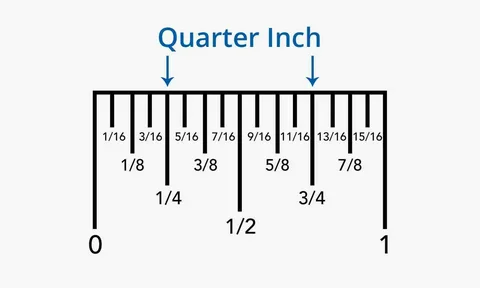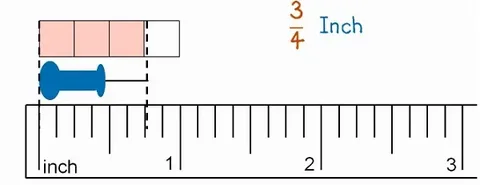Quarter Inch Gaps: Small Spacing, Big Impact in Home Projects
kifayatullahmohmand997@gmail.com
Quarter Inch Gaps: Small Spacing, Big Impact in Home Projects
When it includes home development, precision is prime. While large measurements frequently steal the spotlight, a small area-inch hollow may want to have a full-size impact at the top-notch, functionality, and aesthetics of your project. In this weblog post, we will discover why those tiny gaps rely on number variety, the way to manipulate them, and suggestions for reaching perfection in your property projects.
Table of Contents
The Importance of the Quarter Inch
At first look, 1 / 4 inch ought to probably seem insignificant. However, in loads of home improvement obligations—whether or not it’s putting in flooring, putting drywall, or becoming trim—this small size ought to make or ruin the very last result.

- Structural Integrity
- An area-inch hole may want to affect structural stability. For instance, if tiles are spaced erratically through a manner of 1 / four inch, it could cause misaligned grout lines, choppy surfaces, and capacity cracking.
- Aesthetic Appeal
- Gaps are frequently visible to the naked eye. A place-inch inconsistency in crown molding or baseboards can disrupt the visibility of the flow of a room, making the distance appear sloppy or unfinished.
- Functionality
- In obligations like a door or window installation, 1 / a 4-inch hollow could in all likelihood appear minor, but it can result in drafts, electricity inefficiency, or problems in starting and closing.
Common Scenarios Where Quarter-Inch Gaps Matter
Here are some normal domestic improvement situations wherein managing 1 / 4-inch gap is crucial:
- Flooring Installation
- Laminate and Wood Floors: Proper spacing guarantees the material has room to enlarge and settle because of temperature adjustments. An area-inch hole alongside partitions is often recommended to prevent buckling.
- Tile Flooring: Even grout traces create an expert appearance. An area-inch spacer allows you to keep consistency within the direction of the tile setup.
- Drywall Hanging
- Leaving 1 / 1/4-inch hollow among drywall sheets and flooring lets in room for enlargement and prevents cracking due to the fact the residence settles.
- Trim and Molding
- Gaps amongst trim pieces or amongst trim and walls can be an important eyesore. Filling those gaps with caulk is an easy way to gain a continuing look.
- Door and Window Frames
- Gaps around frames want to be specific. Too huge, and you risk air leaks; too slender, and the door or window might not be healthy well.
How to Measure and Manage Quarter-Inch Gaps

- Use the Right Tools
- Tape Measure: An extremely good tape degree ensures you could degree because it needs to be all the manner the manner down to the region-inch.
- Spacers: Pre-made spacers are tremendous for everyday gaps inside the path of tile or floor responsibilities.
- Level and Square: Ensures at once traces and angles, assisting you avoid uneven gaps.
- Plan Ahead
- Sketch out your project and take particular measurements in advance rather than cutting substances. Add or subtract 1 / 4 inch which had to allow for changes.
- Fill Gaps Wisely
- Caulk: For trim and molding, flexible caulk fills small gaps seamlessly.
- Shims: Thin wedges of wood or plastic can regulate gaps in frames or below flooring.
- Grout or Sealant: Use tiles to build up a polished quit and prevent particles from gathering in gaps.
- Cut Materials Precisely
- Use a power system with courses for direct cuts.
- Practice on scrap material to make sure your cuts are accurate.
Common Mistakes to Avoid

- Overlooking Expansion Gaps
- Always account for cloth boom and contraction. Failing to move away a 1 / four-inch hole along partitions for wood or laminate flooring can result in unsightly buckling.
- Neglecting the Role of Spacers
- Eyeballing gaps, specifically with tiles, can lead to choppy spacing. Use spaces to preserve gaps ordinary.
- Relying Too Much on Fillers
- While caulk and shims are beneficial, they shouldn’t update the right measuring and lowering. Overuse can compromise the structural and aesthetic brilliance of your paintings.
Conclusion
The region inch is probably small, however, its impact on home duties is top-notch. Whether you’re laying flooring, placing drywall, or installing trim, being attentive to the tiny measurements can ensure your paintings are beneficial, long-lasting, and visually attractive. By using the right equipment, planning carefully, and addressing gaps with precision, you could keep away from expensive mistakes and accumulate expert-extremely good consequences.
FAQs
1. Why is 1 / 4-inch hole important for flooring installation?
An area-inch hole allows floor substances like laminate or hardwood to boom and settle with temperature and humidity modifications. This prevents buckling or cracking over the years.
2. Can I eyeball area-inch gaps as opposed to measuring?
It’s no longer encouraged. Using equipment like tape measures or spacers guarantees consistency and accuracy, resulting in an elegant, expert look.
Three. What can I use to fill 1 / a 4-inch hole in the trim?
Flexible caulk is good for filling gaps amongst trim pieces or amongst trim and walls. It affords a smooth, seamless end.
Four. How do I degree a 1 / four-inch hole successfully?
Use a remarkable tape measure, ruler, or pre-made spacers. For repetitive duties like tiling, spacers are the most inexperienced alternative.
5. What occurs if I don’t go away 1 / a four-inch hollow throughout the setup?
Skipping this step can result in problems such as uneven surfaces, structural instability, or harm due to material growth and contraction.




Write a Comment